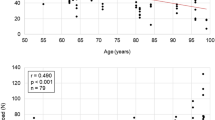Abstract
Study Design
An in vitro biomechanical study into the effect of rib deconstruction on the flexibility in ovine ribs, using three-point bending.
Objective
To examine the feasibility and possible effectiveness of a more conservative costoplasty using an in vitro animal model.
Summary of Background Data
Costoplasty remains useful in the treatment of adolescent idiopathic scoliosis, rib hump, and associated chest wall deformities. However, traditional costoplasty increases morbidity and blood loss.
Methods
Ribs 2–10 were dissected from four fresh half ovine rib cages. The ribs were randomly allocated to Groups 1 to 4. The ribs underwent deconstruction, 10 mm from the lateral tubercle and 30 mm long, according to their group: Group 1 = control; Group 2 = convex cortical bone removed; Group 3 = convex cortical and cancellous bone removed; Group 4 = all but the ventral cortex is removed. Flexibility was tested by loading the concave side of each rib while fixed at the rib head and equidistant from the center of the resected area. The ribs were deformed at 0.5 mm/s up to a maximum load of 9.99 kg or fracturing. Load was plotted against displacement to find the load/displacement coefficient for each group. Statistical analysis was by an analysis of variance with Tukey’s honestly significant difference post hoc testing.
Results
The load/displacement coefficients were as follows: Group 1 = 131.93 (±27.52) N/mm, Group 2 = 93.36 (±40.71) N/mm, Group 3 = 88.66 (±25.84) N/mm, and Group 4 = 29.69 (±29.11) N/mm. Group 4 was significantly less stiff than Groups 1, 2, and 3 (p < .01). No ribs in Groups 1, 2, and 4 fractured. Five of 8 ribs in Group 3 fractured during loading.
Conclusions
Deconstructing the rib down to the concave side significantly increases the flexibility by approximately 4.5 times. Despite large removal of bone, it retains the ability to withstand 10 kg of load without fracture.
Similar content being viewed by others
References
Yang JH, Bhandarkar AW, Kasat NS, et al. Isolated percutaneous thoracoplasty procedure for skeletally mature adolescent idiopathic scoliosis patients, with rib deformity as their only primary concern: short term outcomes. Spine (Phila Pa 1976) 2013;38:37–43.
Soultanis K, Pyrovolou N, Karamitros A, et al. The use of thoracoplasty in the surgical treatment of idiopathic scoliosis. Stud Health Technol Inform 2006;123:327–33.
Harding IJ, Chopin D, Charosky S, et al. Long-term results of Schollner costoplasty in patients with idiopathic scoliosis. Spine (Phila Pa 1976) 2015;30:1627–31.
Chunguang Z, Yuemming S, Limin L, et al. Convex short length rib resection in thoracic adolescent idiopathic scoliosis. J Pediatr Orthop 2011;31:757–63.
Shi Z, Wu Y, Huang J, et al. Pulmonary function after thoracoplasty and posterior correction for thoracic scoliosis patients. Int J Surg 2013;11:1007–9.
Yaszay B, Jazayeri R, Lonner B. The effect of surgical approaches on pulmonary function in adolescent idiopathic scoliosis. J Spinal Disord Tech 2009;22:278–83.
Gitelman Y, Lenke LG, Bridwell KH, et al. Pulmonary function in adolescent idiopathic scoliosis relative to surgical procedure: a 10-year follow-up analysis. Spine (Phila Pa 1976) 2011;36:1665–72.
Greggi T, Bakaloudis G, Lolli F, et al. Thoracoplasty in the surgical treatment of adolescent idiopathic scoliosis. Stud Health Technol Inform 2008;140:289–93.
Pezowicz C, Glowacki M. The mechanical properties of ribs in the young adult. Acta Bioeng Biomech 2012;14:53–60.
Berteau JP, Pithioux M, Follet H, et al. Computed tomography, histological and ultrasonic measurement of adolescent scoliotic rib hump geometrical and material properties. J Biomech 2012;45:2467–71.
Stitzel JD, Cormier JM, Barretta JT, et al. Defining regional variation in the material properties of human rib cortical bone and its effect on fracture prediction. Stapp Car Crash J 2003;47:243–65.
Min K, Waelchli B, Hahn F. Primary thoracoplasty and pedicle screwinstrumentation in thoracic idiopathic scoliosis. Eur Spine J 2005; 14:777–82.
Grealou L, Aubin CE, Labelle H. Rib cage surgery for the treatment of idiopathic scoliosis: a biomechanical study of correction mechanisms. J Orthop Res 2002;20:1121–8.
Carrier J, Aubin CE, Trochu F, Labelle H. Optimization of rib surgery parameters for the correction of scoliotic deformities using approximation models. J Biomech Eng 2005;127:680–91.
Oda I, Abumi K, Lu D, et al. Biomechanical role of the posterior elements, costovertebral joints, and rib cage in the stability of the thoracic spine. Spine (Phila Pa 1976) 1996;21:1423–9.
Closkey RF, Shultz AB. Rib cage deformities in scoliosis: spine morphology, rib cage stiffness, and tomography imaging. J Orthop Res 1993;11:730–7.
Chansirinukor W, Lee M, Latimer J. Contribution of ribcage movement to thoracolumbar posteroanterior stiffness. J Manipulative Physiol Ther 2003;26:176–83.
Sham ML, Zander T, Rohlmann A, Bergmann G. Effects of the rib cage on thoracic spine flexibility. Biomed Tech (Berl) 2005;50:361–5.
Closkey RF, Shultz AB, Luchies CW. A model for studies of the deformable rib cage. J Biomech 1992;25:529–39.
Kemper AR, McNally C, Pullins CA, et al. The biomechanics of human ribs: material and structural properties from dynamic tension and bending tests. Stapp Car Crash J 2007;51:235–71.
Kindig M, Li Z, Kent R, Subit D. Effect of intercostal muscle and costovertebral joint material properties on human ribcage stiffness and kinematics. Comput Methods Biomech Biomed Eng 2015;18:556–70.
Author information
Authors and Affiliations
Corresponding author
Rights and permissions
About this article
Cite this article
Hughes, M., Bernard, J. & Szarko, M. An In Vitro Biomechanical Study on Ovine Rib Flexibility With Increasing Deconstruction—As an Alternative to Rib Resection for Costoplasty. Spine Deform 6, 99–104 (2018). https://doi.org/10.1016/j.jspd.2017.07.002
Received:
Revised:
Accepted:
Published:
Issue Date:
DOI: https://doi.org/10.1016/j.jspd.2017.07.002



